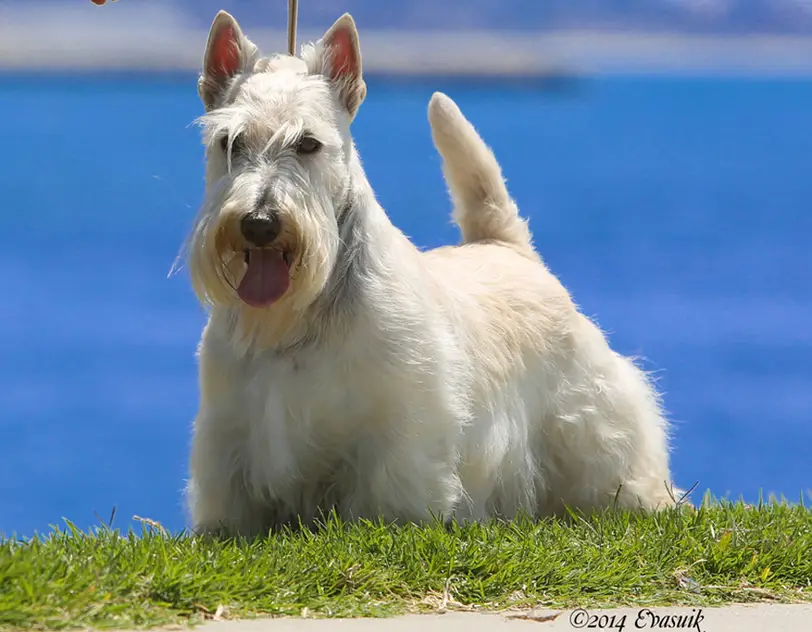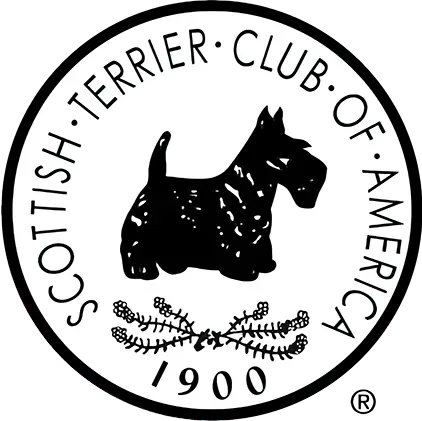"How to meet a Scottie"
Sounds like a pretty simple thing. We just walk up, say “hello, good pup” and reach out to pet. Except this isn’t really a good way to approach any new dog including our breed, which is described as “alert and spirited” and nicknamed “Diehard”.
How we approach pets or show dogs is important in maintaining a positive view of our breed, especially in these days of anti-dog legislation.
Many of us take for granted that people will know how to greet our breed, so we often forget to advise. We hear stories from vets, neighbors and others about Scotties that bit them.
Can we help avoid this? Yes!

Perspectives
Advice for different types of dog handlers from Kathleen J. Ferris
Breeders
We owe it to prospective owners to do what we can from the start. Careful consideration is given to parent's temperaments, but socialization is huge. Keeping pups isolated never works. They need to hear noise and different voices. Bring in family members and handle repeatedly with soothing strokes, reassurance and praise. My own extra is to never let them use teeth on skin. I make certain that the pups understand a "No” from the beginning and reward them when they stop. This saved me from a serious bite when two of my girls decided to go for a biscuit on the floor. My hand got there before them and ended up in their mouths. The moment they realized it they stopped.
Owners
How we instruct someone to meet our Scottie is critical. I always give advice. The simple act of making a closed fist and presenting it palm down to protect the hand is excellent. It allows the dog to smell and accept the approach. Stop people from crouching down to the dog’s level. All that might do is to cause a confrontation with the dog. Give the person a treat to reassure the dog that they mean well. Never snap the dog away from a new person. You may reinforce possible negative behavior for the future.
Judges
You have the right to disqualify for menacing behavior. All the more reason to respect Scotties and approach correctly. I was told the best judge’s hands never leave the dog until the exam is completed. Once completed, they do not go back.
On the table, approach the Scottie so it sees you. Never lift the head and stare up the nose into the eyes. A simple raise of the eyebrow from the side shows shape and set of the eye and is less confrontational. I have seen Scotties stiffen and bristle when being stared down. Once done, keep your presence known by leaving one hand on the head as you move the other down the neck to the chest. Continue this two-hand movement over the animal until you finish. Never come from behind. It would be a shame to DQ because you startled the dog. We also ask that you never try to examine a dog on the ground, even if to quickly check a shoulder. Instead, put the dog back on the table.
A very important point is: if you just sparred some of the dogs, don’t try to handle them. They won’t see you as the judge, but instead as an obstacle blocking them from their competition. These few things seem like common sense, but can make a profound difference on how the world will view our breed.
These are a few of the suggestions I follow; others may have more to add, but the best advice is to always meet a breed in an educated manner.
